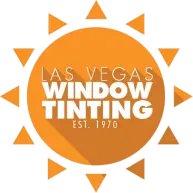![Navigating HOA Rules and Regulations for Residential Window Tinting [2025]](https://www.lvtint.com/blog/blog/wp-content/uploads/2025/02/Navigating-HOA-Rules-and-Regulations-for-Residential-Window-Tinting-2025-1024x576.webp)
Homeowners Associations (HOAs) are known for enforcing strict rules to maintain a uniform and aesthetically pleasing neighborhood. If you’re considering window tinting for your home, it’s crucial to understand how HOA regulations may impact your choices. This guide will help you navigate HOA rules for residential window tinting in 2025, ensuring compliance while enjoying the benefits of privacy, energy efficiency, and UV protection.
Why HOAs Regulate Window Tinting?
HOAs establish rules to preserve property values, maintain uniformity, and enhance curb appeal. Window tinting, while beneficial, can alter the exterior look of a home, which is why many associations have specific regulations governing:
- Tint Darkness & Reflectivity – Some HOAs set limits on how dark or reflective the tint can be.
- Approved Tint Colors – Certain colors, such as metallic or mirrored tints, may be prohibited.
- Exterior Appearance – HOAs often require window films to be non-obtrusive and blend with the home’s design.
- Glare Reduction – Some tints can create glare that affects neighbors, which is a common concern.
How to Check Your HOA's Window Tinting Rules?
To avoid fines or mandatory tint removal, follow these steps before proceeding with installation:
- Review HOA Governing Documents
- Check the Covenants, Conditions, and Restrictions (CC&Rs) for specific language on window modifications.
- If unclear, consult the HOA’s Architectural Review Committee (ARC).
- Submit a Window Tinting Request
- Many HOAs require prior approval before making changes to exterior windows.
- Provide details such as film specifications, tint percentage, and manufacturer information.
- Consult with a Window Tinting Professional
- A licensed installer can recommend HOA-compliant films and assist with documentation.
- Some manufacturers offer pre-approved tinting options for specific HOA communities.
Common HOA-Approved Window Tinting Options
If your HOA has restrictions, consider these popular window tinting solutions that meet most HOA guidelines:
Type of Window Tint | Benefits | HOA Approval Chances |
Ceramic Window Tint | Blocks UV rays, reduces heat, and is nearly invisible | ✅ High |
Neutral or Non-Reflective Tint | Provides privacy without altering appearance | ✅ High |
Dual Reflective Tint | Balances glare reduction with exterior aesthetics | ⚠️ Moderate |
Mirror/Metallic Tint | High heat rejection but may be prohibited | ❌ Low |

What to Do If Your HOA Denies Your Request?
If your HOA rejects your tinting request, consider the following options:
- Request a Variance – Some HOAs allow exceptions if you can demonstrate energy savings or minimal visual impact.
- Appeal the Decision – Attend an HOA meeting to discuss your case with the board.
- Explore HOA-Compliant Alternatives – Consider frosted or decorative films that provide privacy while maintaining aesthetics.
Final Thoughts
Navigating HOA window tinting rules in 2025 requires research, planning, and communication. By understanding your association’s regulations, choosing HOA-friendly films, and following the approval process, you can enjoy the benefits of window tinting while remaining compliant.
Frequently Asked Questions
HOAs often restrict tint darkness, reflectivity, and colors, requiring tints to maintain a uniform appearance and not obstruct views.
Review your HOA’s CC&Rs or architectural guidelines, or contact the HOA board or management company for specific rules.
Neutral, non-reflective, and light-tint films that maintain clarity and match the building’s aesthetic are least likely to violate HOA rules.
Submit a formal request with details on the tint type, brand, and specifications, emphasizing compliance with HOA guidelines and aesthetic harmony.
Brands like 3M, Llumar, and Solar Gard often offer neutral, non-reflective tints that align with HOA rules, but check your HOA’s specific requirements.
